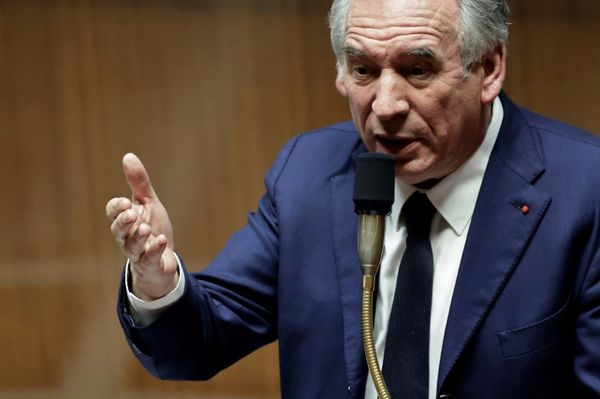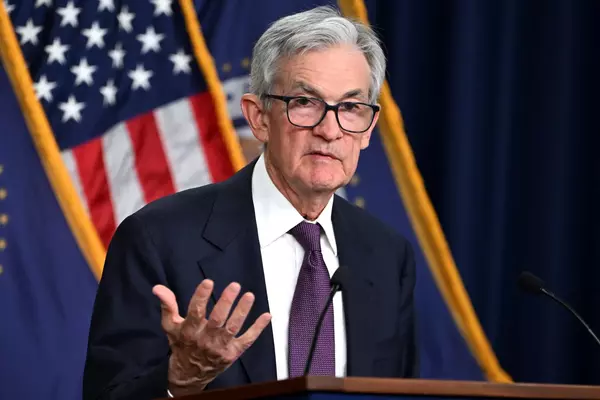ST. LOUIS — A high-tech system used by police to detect gunshots sent officers into neighborhoods looking for signs of gunfire more than 15,000 times last year in St. Louis and St. Louis County.
But in an overwhelming number of cases there was nothing to be found: no shooting victim, no gunman and no reason to investigate.
The ShotSpotter gunshot detection system, run by a publicly traded California company that uses microphones to pinpoint gunfire, now covers about 14 square miles of high-crime areas in the city and North County.
In its 13 years in the region, the program has dramatically increased call volumes for reports of gunfire. Calls went up nearly 70% in city neighborhoods after it launched in 2008 and about 400% in the first county region it covered beginning in 2017, according to recent academic reviews of the technology in both jurisdictions.
Although ShotSpotter has driven up police response, data shows it often leads to dead ends. Police say the system is still an important investigative tool that can provide key evidence in a case, but the results lead some researchers and activists to call into question whether it’s a sound use of public money. The two leading police agencies in the region pay ShotSpotter at least $740,000 a year. Another $300,000 is paid by the St. Louis Police Foundation, a nonprofit group that provides private funding for police services.
”We found ShotSpotter doesn’t bring a whole lot of new cases to the police’s attention in St. Louis and had no real effect on crime when it came into a neighborhood,” according to Dennis Mares, a criminologist with Southern Illinois University Edwardsville who co-wrote a study that provided a 10-year review of ShotSpotter in St. Louis. “But what becomes harder to disentangle is: Does it bring any actionable intelligence in cases that also get called in by citizens? That is impossible to sort out.”
Mares co-authored the study with Emily Blackburn, the manager of the St. Louis police department’s Crime Analysis Unit.
Their research found that in St. Louis less than 1% of ShotSpotter calls over a five-year period yielded enough evidence, such as shell casings or a witness, for officers to write a report. From 2008 to early 2018 there were more than 19,000 ShotSpotter calls for service in the city, but only 13 arrests uniquely tied to the alerts, they found.
Recent results are slightly better in St. Louis County. This year, officers have written incident reports for 151 of the nearly 2,320 ShotSpotter activations, or about 6.5% of the time, according to that police department.
Mares says the research doesn’t indicate that ShotSpotter lacks value but argues responding to every ShotSpotter call yields relatively few results.
Worth the money?
“I think the issue is: Is ShotSpotter bringing the value that it’s costing?” Mares asked. “It could certainly be used to help with long-term strategy and crime analysis, but between the officer time and pricing, I think it’s overly expensive for what agencies get out of it.”
Despite the findings, both departments in the last year have doubled down on the program by requesting donations from the St. Louis Police Foundation to expand coverage to more areas.
St. Louis police Maj. Shawn Dace says ShotSpotter is a way to confirm where shots were fired and a fact-check for witness and suspect accounts.
”It’s an important starting point for an investigation,” Dace said. “Unfortunately there have been times where an individual may show up at a hospital and say he was shot at this location and we’ve been able to disprove that with ShotSpotter.”
The St. Louis Police Officers Association, the union representing most officers in the city, opposes an ongoing push from criminal justice activists to cut the technology.
”The notion that it’s not a really good idea for a police car to at least roll through a neighborhood where shots have been fired is preposterous and contributes to a white flag mentality on violent crime that relegates this city to mob rule,” said the union’s lobbyist and spokeswoman, Jane Dueker. “In the St. Louis region, ShotSpotter works and has resulted in expedited responses to shootings and apprehension of violent criminals.”
City an early user
ShotSpotter sensors began dotting St. Louis roofs and utility poles in June 2008, when the city accepted a $250,000 Justice Department grant to cover the first year of the program.
St. Louis was among the first wave of police departments to adopt the technology, but today ShotSpotter and other gunshot detection programs are becoming a standard tool for big city departments. ShotSpotter is used by more than 100 police agencies in the U.S., including New York and Chicago.
After a 3.5-square-mile expansion in 2013 and two nearly 3-square-mile expansions last year, ShotSpotter now has sensors across more than 6 miles of St. Louis, or about 9% of the city’s land area.
The department’s three-year contract to cover that area totals about $219,000 a year. On top of that, the most recent expansions last year were funded by a $130,000 donation from the St. Louis Police Foundation and $73,000 from a Justice Department grant.
ShotSpotter Senior Vice President of Marketing and Product Strategy Sam Klepper explained how the technology works in a conversation with the St. Louis Post-Dispatch last year.
ShotSpotter sets up about 20 to 25 microphones for every square mile it covers. Each picks up gunfire within about a mile radius.
The sensors are triggered by loud, sharp noises and audio is then run through artificial intelligence software that compares the sound with samples of gunshots and to noises such as cars backfiring or fireworks, Klepper said.
Typically multiple microphones pick up the sound and they’re able to calculate a location within 25 meters of the gunfire, the company claims.
Next comes the team of people who listen to the audio. Staff at “incident review centers” listen and confirm gunfire before sending an alert to police.
The company claims it catches at least 90% of outdoor gunfire within 60 seconds.
St. Louis police consider ShotSpotter calls to be “Priority 2,” the same as a 911 call for shots fired, but not as urgent as a call for a confirmed shooting.
The research done by Mares and Blackburn is the most thorough conducted on the system’s impact on the city.
”I do think that other research has shown that ShotSpotter is pretty good at accurately detecting gunfire, especially in recent years,” Mares said.
Mares and Blackburn found that ShotSpotter in St. Louis adds an average of about 1,000 calls a year in each square mile of coverage, but residents’ calls for shootings surprisingly fell by about 25% when gunshot detection was added in a neighborhood.
When the ShotSpotter contract lapsed for four months in the city in 2016, the research showed 911 calls by residents returned to near their previous level.
“We’re not sure exactly why that is,” Mares said. “It could be that people are hearing police sirens so they don’t call it in.”
The finding is concerning because resident-initiated calls tended to uncover more crime, he said.
The study found officers created incident reports in fewer than one case for every 100 St. Louis ShotSpotter calls, and reported a violent crime only about once for roughly every 300 calls.
For every 100 calls made by residents about shots being fired, however, St. Louis officers reported 7.6 founded crimes.
ShotSpotter is “no match for a human caller” and may actually preempt calls that could be useful to investigators, Mares said.
The study also made a few other determinations, including that police response time slowed as the ShotSpotter program expanded.
”This may not be true for every city,” Mares said. “But for one like St. Louis with a high level of gunfire, I think the call volumes become burdensome for a department that’s been struggling to fill positions when those calls turn up so little.”
While the research by Mares and Blackburn suggests responding to ShotSpotter calls may not be worth officers’ time, another review of the department came to the opposite conclusion, suggesting that to be more effective officers need to respond to ShotSpotter calls more quickly.
An analysis of the department’s operations by consultants with Teneo, a private firm that employs industry experts and former police chiefs, suggested that ShotSpotter calls should instead be made into “Priority 1” calls.
The assessment found that treating ShotSpotter calls as Priority 2 leads to an average response time of 12 to 14 minutes and “may compromise the ability to obtain witnesses and evidence.”
”We believe that responding to ShotSpotter notifications as Priority 1 calls would not significantly hamstring the department’s staffing or response times. It would also better enable intelligence and evidence gathering to identify and apprehend some of the city’s most violent criminals and reduce the number of guns on the streets,” the Teneo report concluded.
St. Louis County
ShotSpotter contracts today cover about 9 square miles in North County, encompassing parts of Castle Point, Jennings, Spanish Lake and, most recently, Glasgow Village.
The county pays about $520,000 a year for ShotSpotter. On top of that, the Glasgow Village expansion will be funded for two years through a $318,000 donation from the St. Louis Police Foundation.
The county’s first neighborhood with ShotSpotter, about 4 square miles around Castle Point, was the subject of a data analysis by the Policing Project, a think tank associated with the New York University School of Law. The think tank gets funding from ShotSpotter, and ShotSpotter CEO Ralph Clark sits on the project’s advisory board.
The analysis found that in the first 16 months of installing ShotSpotter there, calls for service for gunfire quadrupled. The review also found that assaults fell by 30% compared with surrounding areas, though the study saw no effect on arrest rates or other crimes.
Of the department’s more than 2,300 ShotSpotter activations in 2021, 22 were connected to arrests and 151 had a related crime report, including five homicides, according to the department.
ShotSpotter alerted police to 21 cases where a victim was found when officers arrived, eight cases where a suspect was on scene and two cases where officers found witnesses.
Sgt. Ben Granda, a spokesman for St. Louis County police, said the department supports the program because detectives want to be alerted to a shooting as soon as possible.
“They value knowing the precise number of gunshots involved in an incident, the locations where they are and the ability to determine if there are multiple firearms being used in the same incident,” Granda said.
Apart from the St. Louis region, independent research has also delved into ShotSpotter’s impact on crime and policing.
A report on Chicago’s ShotSpotter system from the MacArthur Justice Center at the Northwestern University School of Law published in May found that over 18 months, 86% of the city’s ShotSpotter calls led to no indication of a crime.
”The predominantly Black and Latinx neighborhoods where ShotSpotter operates will have inflated gunfire statistics because of the enormous number of unfounded ShotSpotter alerts,” the report said. The report argues ShotSpotter may create a sense of overpolicing in the communities of color where it operates.
In April, Mitch Doucette, a scientist with the Johns Hopkins Bloomberg School of Public Health, co-wrote a review of the effect ShotSpotter had on crime in counties that launched the technology from 1999 to 2016.
The study found that for counties where ShotSpotter had at least some coverage, there was no discernible impact on firearm homicides, homicide arrests and weapons arrests.
Doucette argues there is limited academic evidence today to back up ShotSpotter’s own research on its effect on crime.
”In the academic literature, there is limited evidence to suggest that the technology decreases violence overall or has an effect on the patient outcomes,” Doucette said, adding that public policy decisions like gun laws have a much clearer impact on crime.
———
(Kim Bell of the St. Louis Post-Dispatch contributed to this report.)







